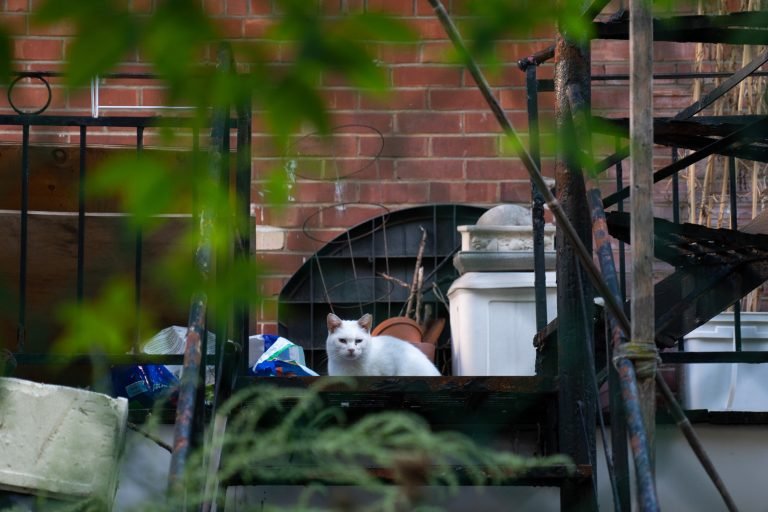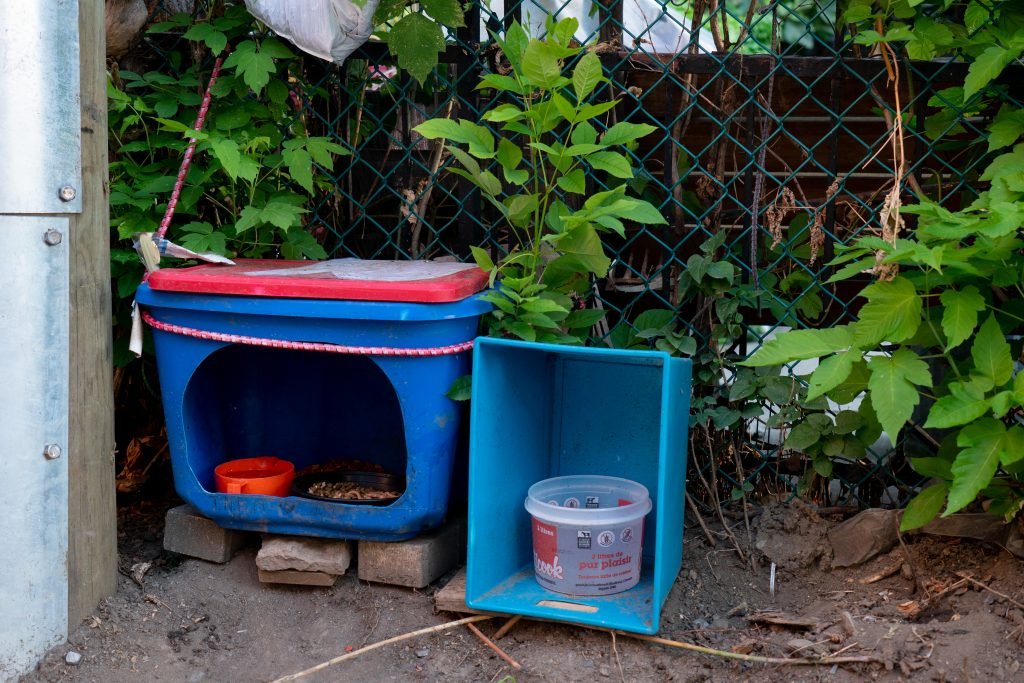
Those who care for them say more needs to be done

If you were to take a stroll down the alleyways that criss-cross the blocks of Parc-Ex, it would come as no surprise to run into a four-legged feline darting across your path. Community cats are a staple of the neighbourhood and have been for decades.
These community cats also referred to as stray and feral cats, are un-owned domestic cats that live outdoors in small and large groups called colonies. Although there are no official counts on the number of strays in the neighbourhood, it is fair to say Parc-Ex is home to several hundred.
Although often used interchangeably feral and stray cats are quite different. Stray cats refer to previously owned or abandoned cats that are socialized and comfortable around humans. On the other hand, feral cats are those which have rarely or never had physical contact with humans, making it close to impossible to socialize them.
Although these creatures are part of the urban landscape like pigeons and squirrels, many see them as pests and a nuisance. This has resulted in several occurrences of animal cruelty, with reports of one cat being shot with a pellet gun in early August.
“What the problem is right now is there is nowhere to put these cats,”
Not enough adoptions
While some dislike these neighbourhood animals, others take it upon themselves to care for them. Chrisoula Skarperos is a Parc-Extension resident who feeds and provides shelter to over 60 neighbourhood cats around Champagneur Ave. and Saint-Roch.
“What the problem is right now is there is nowhere to put these cats,” said Chrisoula Skarperos as she completed her morning feeding rounds that she pays for out of pocket. She says that many of them can be socialized into loving pets.
Skarperos also participates in the Montreal SPCA’s Trap-Neuter-Release-Maintain (TNRM) program, which works to trap and spay community cats before reintroducing them into their environment. This has been shown to reduce populations over time. Although Skarperos sees the program as crucial, she would like to see more of the cats she cares for put up for adoption.
She added that the Montreal SPCA had also been releasing socialized and adoptable cats back into the streets instead of putting them up for adoption. Although correct, the Montreal SPCA defended this stating that they did so for several ethical and practical reasons.

Humane treatment
Élise Desaulniers is the executive director at the Montreal SPCA and is a staunch defender of TNRM programs, which she says is the most effective tactic at managing community cat populations.
Desaulniers said that although she encourages people to adopt community cats that they are taking care of, she added that her organization’s TNRM program is designed to reintroduce cats into their habitat.
“It’s a technique that has shown in other cities around North America that it is the most efficient way to reduce the population of feral cats,” Desaulniers explained, specifying it was also the most humane way to deal with these populations.
“What we realize also is that putting a cat in a cage at the SPCA so people can adopt them is not always the best thing to do for the cat welfare,” she added, explaining that there still weren’t enough homes to send many of these cats to.
Conflicting evidence
While many studies show that these programs are successful, a 2020 study conducted by researchers at the Institute of Food and Agricultural Sciences at the University of Florida found otherwise.
The study concluded that most TNRM programs were not broad and thorough enough to significantly affect feral cat populations. They concur with another 2009 study that finds that “TNR colonies do not decrease without high adoption/removal rates.”
“These colonies are both a danger to the cats themselves and to nearby humans and wildlife,” the study adds, explaining that “euthanizing sick, injured, or unadoptable cats may be the only solution in cases where adoption rates are low.”
Desaulniers stated that although the Montreal SPCA would not release sick or injured cats back into their colonies, she felt the TNRM program was the most humane and deemed successful in Montreal.
Need for aid
Although Skarperos takes care of Parc-Extension’s cats on a volunteer basis, she would like to see more financial and legislative help come from the city. “I cannot afford 600 bucks a month,” she added, explaining that the expenses of feeding all these cats were too much.
Extra funding would not only help feed and shelter the cats but also provide those who care for them the possibility to access affordable veterinary care. “The vets are too expensive, we need at least special prices for the people that work with cats,” she said.
This stance is shared by the Montreal SPCA. Desaulniers added that laws had to change to ensure people don’t abandon their cats and further contribute to the problem. “The reason that comes back often is that people are moving and they have a hard time finding an apartment that allows cats or dogs,” she explained.
Both agree that more has to be done to ensure these cats can have better, healthier and less dangerous lives. “People don’t understand that cats are loving just like dogs. Why are dogs treated differently?” asked Skarperos.
